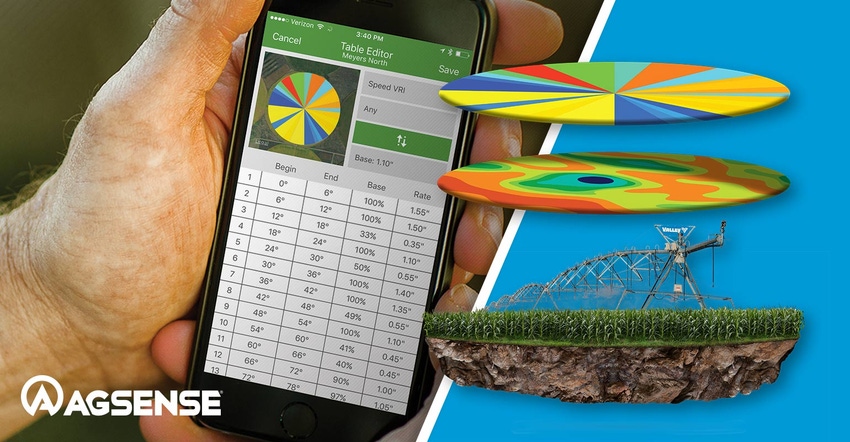August 16, 2017

Sponsored Content
Irrigation is an expensive input that has very high returns when done correctly. As you wrap up the growing season, you will want to make sure that the crop has enough water to reach physiological maturity, but, in order to stay as efficient as possible, you also want to be careful that there’s no more water than is absolutely necessary. Ideally, the field needs to be 60-70% depleted in available water content at harvest. This will allow you to harvest with less soil compaction, improve soil structure by enhancing the effects of freezing and thawing over the winter and give a cushion in case fall precipitation comes and threatens to slow the harvest. With the use of precision irrigation tools, striking that delicate balance can be done very effectively.
Regardless of the crop type, precision Ag companies like CropMetrics will need three things to develop a strategy around scheduling your last irrigation: (1) have a crop model that is accurately depicting the stage of growth of the crop in the field you are working with (2) Know the volumetric water content of the soil, and (3) an accurate weather forecast. With all three of these tools, timing the last application of water becomes much easier to accomplish.

The crop model will tell you when physiological maturity will be reached. Keep in mind, most models simply estimate the crop stage based on historical averages over a broad area. The actual stage of growth on any given field could be different than the historical averages depending on GDU accumulations, planting dates, emergence times and hybrid/variety differences specific to each field.
Once the number of days to physiological maturity is established from the current date, you can estimate the amount of water the crop will need between now and the maturity date. A weather forecast with estimated ET can help with that calculation. For example, if there are 14 days until maturity and the forecasted ET is .15”/day, we will need 2.1” of water to get a black layer, assuming it’s a corn crop.
Next, determine the amount of available water already stored in the soil. Precision soil moisture measuring equipment can readily discern the current volumetric water content of the soil. Normally, if there is 3” of available water, you would limit the use of that to 50% so there is 1.5” of water available. The crop will need 2.1”, so figure on applying another .60” before maturity. However, since this is the end of growing season, up to 70% of that water can be used (assuming you aren’t trying to establish a cover crop by only using the remaining water in the soil). This gives you 2.1”, exactly what is needed to reach maturity. Under these conditions, no more irrigation would be needed.
The last variable that should be considered is the normal rainfall for that specific field. In the first example using 50% of available water, the field was .60” short. But, if the normal rainfall was .50” for that time, you may have decided to use that in the equation and end the irrigation season.
With the right precision irrigation equipment and software, growers can make the most of the efficiency of their irrigation by applying just enough water to maximize yields without adding additional expense and increasing harvest complications.
Written by AgSense in partnership with CropMetrics.
About the Author(s)
You May Also Like




